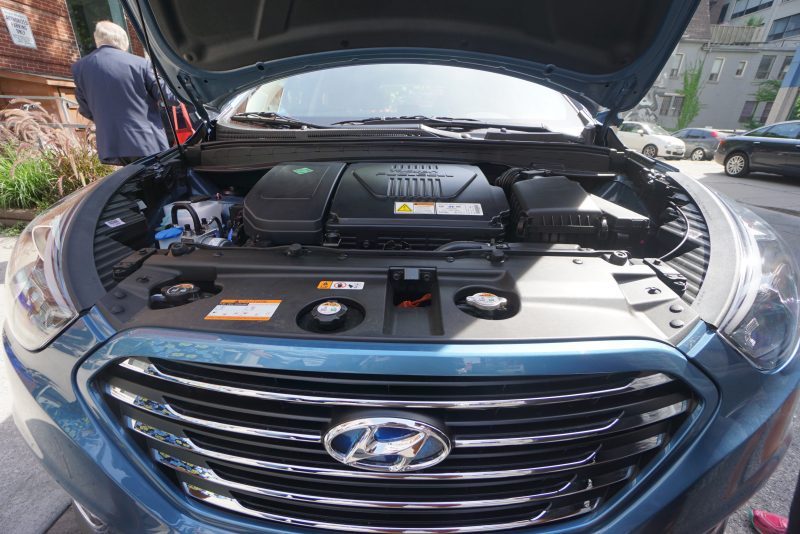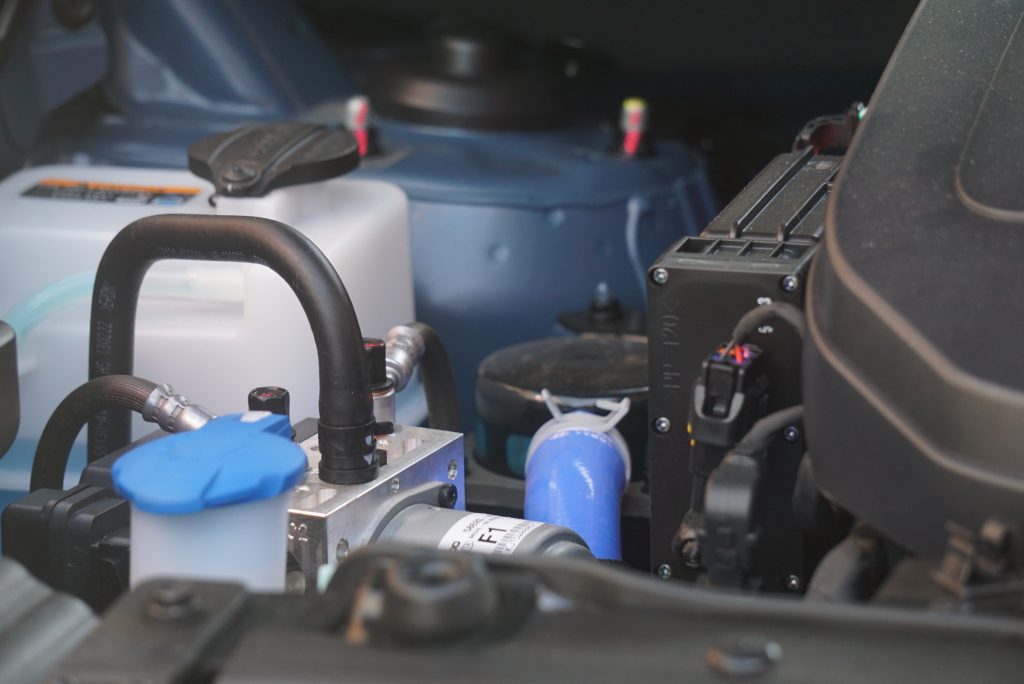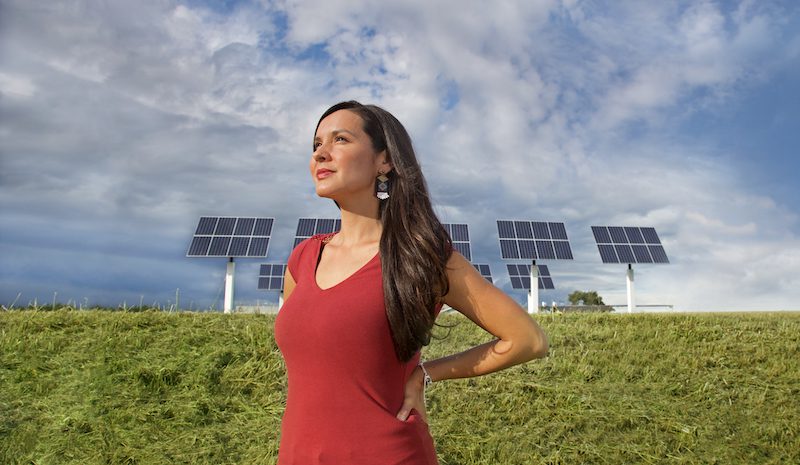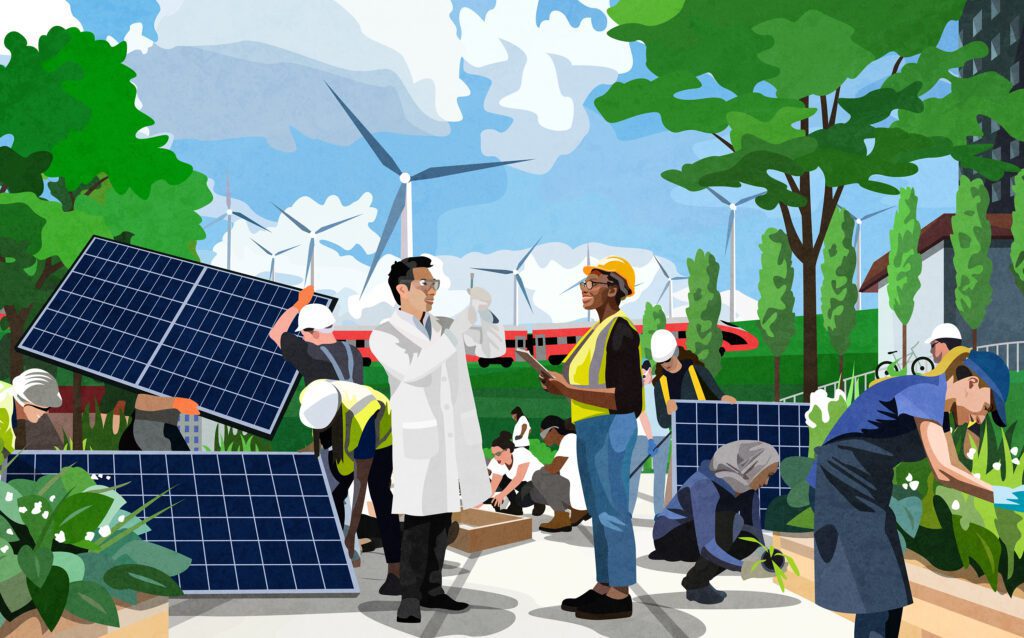Imagine your car is absolutely silent, and that you actually have to install sound so you don’t sneak up on unsuspecting pedestrians. Envision that you can barely feel the road beneath you – as if you are floating along the highway. Visualize that the only trace your commute leaves behind is pure water vapor. Oh, and you can travel 400 km on a single tank. Is this a dream? Fantasy? More like a regular drive in the future of transportation – hydrogen fuel cell electric vehicles – the newest addition to Canadian roads. I know, because I recently test drove one of these cars, and it’s as cool as it is clean.


Canada now boasts 22,652 plug-in hybrid and battery electric vehicles (EVs). And it’s evident that the smart policies and incentives put in place by provincial governments are driving consumers to adopt them. Nearly all sales of EVs in Canada – 96 per cent – were in the three provinces that offer EV purchase rebates: Quebec, British Columbia and Ontario.
The positive impacts of incentives are demonstrated well out West. When BC re-introduced their $5000 provincial rebate for electric car buyers earlier this year, sales jumped two and half times over 2015 levels. We expect to see similar outcomes in Ontario, where the recently released Climate Change Action Plan increases EV rebate’s up to $14,000 per car. Quebec’s current EV rebate of up $8000 (among other incentives) has also played a role in propelling the province to become the national leader in EV sales.
These actions represent important strides for Canada in encouraging a transition to a low-carbon transportation sector, a sector filled with constant innovation. In addition to 2017’s fleet of EV’s from Tesla, GM and others that offer longer ranges and shorter refueling times, there is another option on the market – a sci-fi seeming automobile that runs on hydrogen gas and holds extraordinary potential for alternative energy technology.


Despite their futuristic feel, the science behind hydrogen fuel cell EVs has been around since the 1800’s. Broadly speaking, a hydrogen fuel cell EV is equipped with a fuel stack – a structure akin to a motor or battery – that converts hydrogen gas into electricity, producing only water vapour as a by-product. Incredibly, these vehicles create absolutely no tailpipe pollution when they’re driven. And if the hydrogen gas is made from a renewable source like wind, solar or biomass, no greenhouse gases (GHGs) are emitted – a clean machine indeed.
So why do only seven Canadian households have vehicles that run on hydrogen?
There are three major challenges; making the hydrogen fuel, storing the hydrogen, and distributing it. All three stem from a lack of infrastructure for hydrogen production, transport and dispensing in Canada.
Despite these challenges, major automotive companies are betting on a clean transportation future. Hyundai, Toyota and Honda offer hydrogen fuel cell EVs. GM, BMW, and Mercedes are slated to soon follow suit. Hyundai is currently the only provider in Canada, with six cars in BC and one in Ontario.
While the cars have been slow to hit our roads, Canada is actually considered a world leader in fuel cell technology. The Canadian Hydrogen and Fuel Cell Association reports the industry accounts for 2,000 good jobs in Canada and produces about $200 million a year in goods, though 90% of that is exported to other countries. Hydrogen fuel cell technology developed in Canada now powers cars and buses in the US, Europe and Asia – all which have implemented national hydrogen and fuel cell strategies that encourage the rapid domestic development of the industry.
As provincial and federal governments take bold steps to reduce greenhouse gas emissions in the transportation sector – the largest source of emissions in Ontario and the second largest national emitter behind oil and gas production – it is critical that hydrogen and fuel cell technology is incorporated into national and local strategies. Electric vehicles, whether hydrogen or battery-based, along with other alternative energy technologies, put us on the road to a low carbon future. They all need greater investment to bring Canada to a cleaner, healthier and cooler future.







